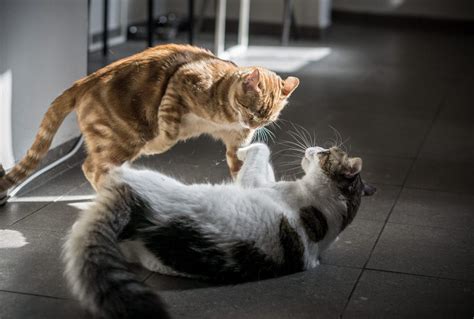Cats are beloved pets, but their behavior can sometimes be challenging. They may scratch furniture, spray urine, or even bite. These behaviors can be frustrating for owners and can even lead to the cat being surrendered to a shelter.

However, there is hope! With patience and the right training techniques, you can help your cat overcome behavior issues and live a happy, healthy life.
Why Cat Training Matters
There are many benefits to training your cat, including:
- Reduced behavior problems: Training can help your cat learn how to behave appropriately, which can reduce or eliminate behavior problems such as scratching, biting, and spraying.
- Improved communication: Training can help you and your cat communicate more effectively, which can lead to a stronger bond between you.
- Increased enjoyment: Training can be a fun and rewarding experience for both you and your cat.
How to Train Your Cat for Behavior Issues
There are a number of different training techniques that you can use to address behavior issues in cats. The best approach will vary depending on the individual cat and the specific behavior problem.
However, some general tips for training cats include:
- Be patient: It takes time and consistency to train a cat. Don’t get discouraged if your cat doesn’t learn a new behavior overnight.
- Be positive: Use positive reinforcement, such as treats or praise, to reward your cat for good behavior.
- Be consistent: Train your cat regularly, and always use the same commands and rewards.
- Start with short training sessions: Keep training sessions short and sweet, especially when you’re first starting out.
- Make training fun: Training should be a positive experience for both you and your cat. If your cat is getting bored or frustrated, take a break.
Effective Strategies for Cat Training
Here are some effective strategies for cat training:
- Clicker training: Clicker training is a type of positive reinforcement training that uses a clicker to mark the exact moment that your cat performs a desired behavior. This helps your cat to quickly learn what behaviors you want them to repeat.
- Target training: Target training teaches your cat to touch a specific target with their nose. This can be used to teach your cat a variety of behaviors, such as coming when called, sitting, and staying.
- Shaping: Shaping is a training technique that involves breaking down a complex behavior into smaller, more manageable steps. This can be helpful for teaching your cat behaviors that they may not be able to learn on their own, such as jumping through a hoop.
- Redirection: Redirection involves redirecting your cat’s unwanted behavior to a more acceptable behavior. For example, if your cat is scratching furniture, you can redirect them to a scratching post.
Step-by-Step Approach to Cat Training
Here is a step-by-step approach to cat training:
- Identify the behavior problem: The first step is to identify the specific behavior problem that you want to address.
- Choose a training strategy: Once you know what behavior you want to address, you can choose a training strategy.
- Set up a training plan: Create a training plan that outlines the specific steps you will take to train your cat.
- Start training: Begin training your cat according to your plan.
- Be patient and consistent: It takes time and consistency to train a cat. Don’t get discouraged if your cat doesn’t learn a new behavior overnight.
- Reward your cat: Use positive reinforcement to reward your cat for good behavior.
- Troubleshoot: If you’re having trouble training your cat, consult with a professional cat trainer.
Future Trends in Cat Training
The future of cat training is bright. As our understanding of cat behavior continues to grow, we are developing new and more effective training techniques.
Some of the future trends in cat training include:
- Increased use of positive reinforcement: Positive reinforcement is a much more effective way to train cats than punishment. In the future, we can expect to see more and more trainers using positive reinforcement techniques.
- More personalized training programs: In the future, cat training programs will be more personalized to the individual cat and their specific needs. This will lead to more effective training outcomes.
- Greater use of technology: Technology can be a valuable tool for cat training. In the future, we can expect to see more trainers using clickers, target sticks, and other training aids.
By staying up-to-date on the latest cat training trends, you can help your cat live a happy, healthy life.
Conclusion
Cat training is a valuable tool for owners who want to address behavior problems and improve their relationship with their cats. With patience and the right training techniques, you can help your cat learn how to behave appropriately and live a happy, healthy life.





















